How to assemble the SS collar-tabs?
A bit of history.
BeVo technology ("be-fo", pronounced separately, the letter v, according to the rules of the German language, reads as "ph") is similar to Jaquard technology (jacquard) and a number of other technologies, which are based on the receipt of a multi-colored product through interweaving of threads in a certain sequence. That is, obtaining a pattern on the fabric is already at the stage of obtaining the canvas itself.
Jacquard technology is named after inventor Joseph Marie Jacquard, who in 1804 designed a jacquard loom, making it possible to manufacture jacquard fabric (as well as ribbons, labels) on an industrial scale. Jacquard weaving has a number of varieties.
The technology we know as BeVo is one of the varieties of jacquard. The BeVo name is a composite of two parts. Be means "beteiligung" (equity participation in an enterprise), and Vo is part of the name Vorsteher. Two firms from the German city of Wuppertal-Barmen (Lucas Vorsteher and Ewald Vorsteher) after the merger formed the company BeVo-Wuppertal. At the ends of their production samples, you can see the inscription BeVo or BeVo-Wuppertal. Silver-woven sleeve bands appeared in 1939 as an alternative to the more expensive hand-embroidered ones. Although the production of labels (for example, Heer collar-tabs and eagles) by this technology had been run until 1939, but this technology is primarily known to the reenactors by the BeVo logo.
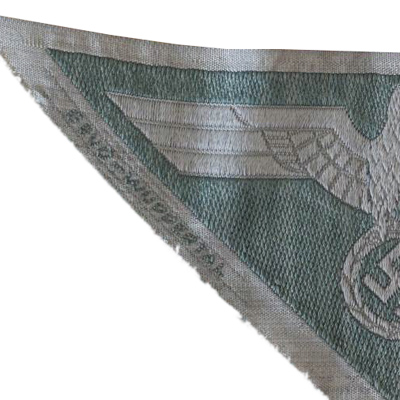
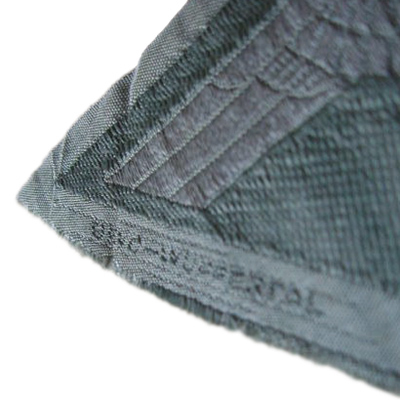
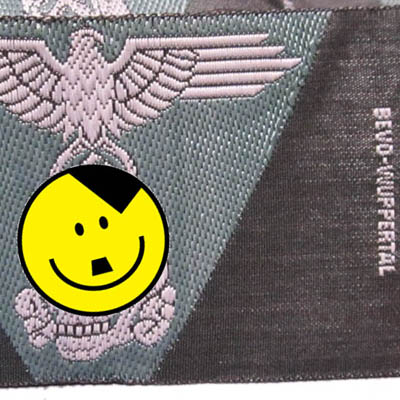
Examples of insignias with the BeVo-Wuppertal logo. Photos from open sources.
In the city of Wuppertal in Germany, there is a series of commemorative plates illuminating the development of textile production (labels, ribbons, fabrics). Naturally, they are tactfully silent about the period of the Third Reich. On Lenneper Street, where Lucas Vorsteher (Lenneper Straße, 50) was located, there are still textile manufactures.
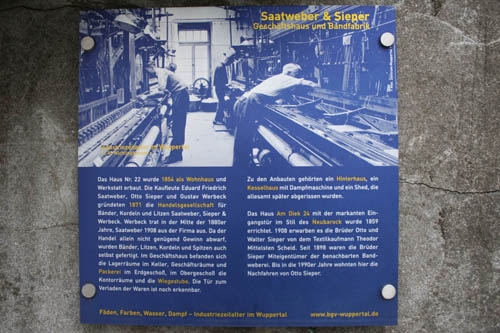
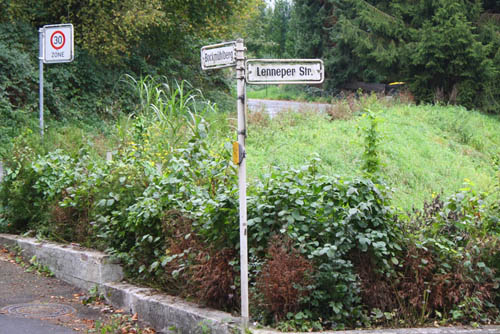
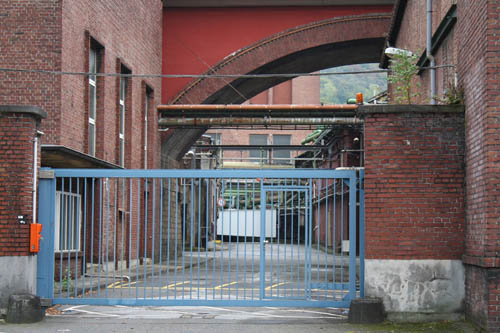
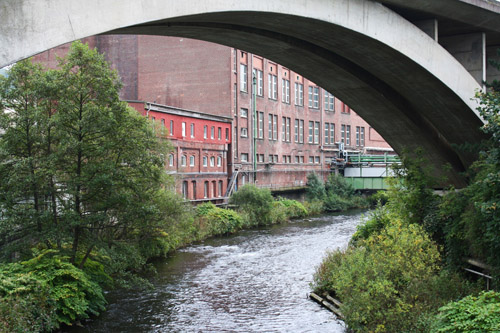
Photo from the collection of the author (A. Volchkov).
For the text on the history of technology used materials from sites: wehrmacht-awards.com/forums/, ru.wikipedia.org, forum.axishistory.com and the book of John Angolia "Cloth Insignia of the SS".
How to fold?
Original insignias were made as a tape. Then they were cut into separate labels, folded and sewn. The SS collar tabs made using BeVo technology were located on the tape both directly (along) and with a slope. I can assume that the slope was necessary for a more accurate laying of the thread (in order to get a diagonall wale and achieve better quality compared to another arrangement of the design).
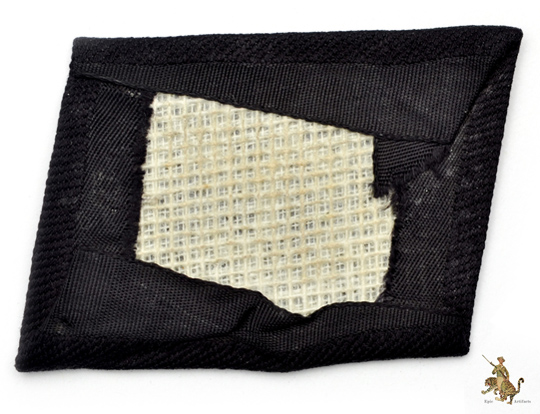
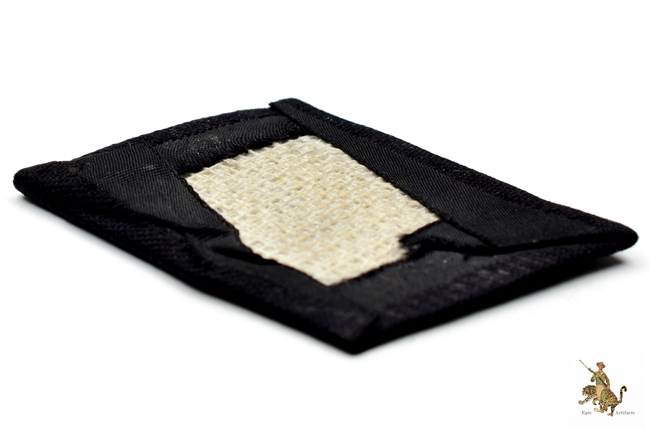
SS BeVo tab woven with a slope. The finished edge of the textile tape is perfectly visible at the horizontal edges. Photo of the original from the site: epicartifacts.com
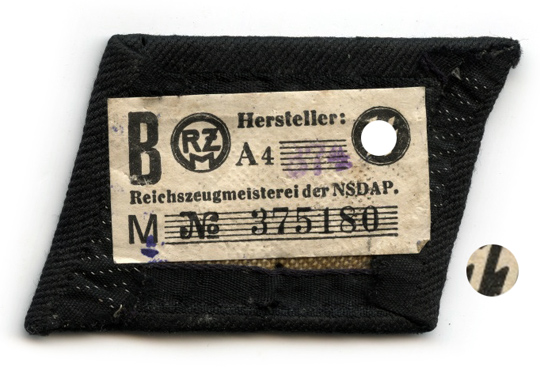
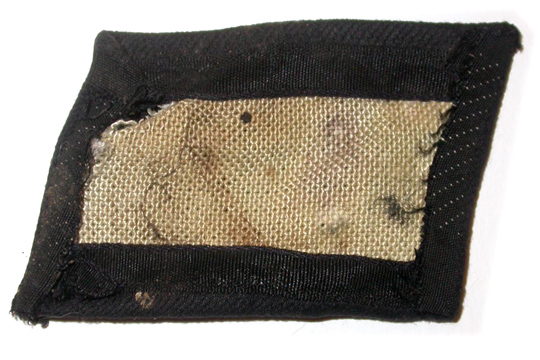
SS BeVo tab, embroidered without the slope. In this case, these are not ordinary tabs with runes, but with a dead head (Totenkopf). Photo of the original from the site: wehrmacht-awards.com/forums
In our example, we use collar-tabs that are initially woven with a slope. From this their edges are oblique.
How to assemble?
1. Prepare the substrate. The material used by Germans was a dirty white (raw) color, made from a large thread, plain weave. The substrate should not be too soft, otherwise the tab will wrinkle along with the collar, and the image on it will be distorted. The substrate serves as a mandrel; if the backing is very soft, it will be impossible to gently and evenly tuck the edges of the tab. The backing should not be very hard, otherwise it will be difficult to sew the tab. A fabric impregnated with a special composition was used as a substrate. After drying the impregnation, the fabric became elastic and moderately stiff, while it was perfectly cut by cutting in the press or with a sharp knife.
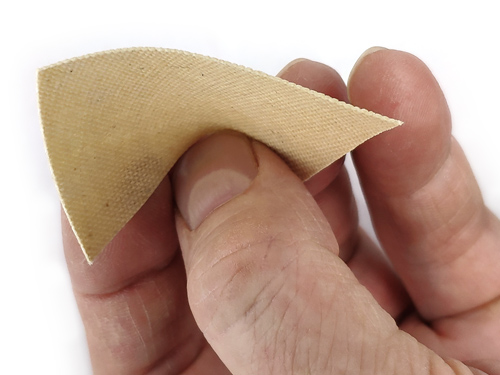
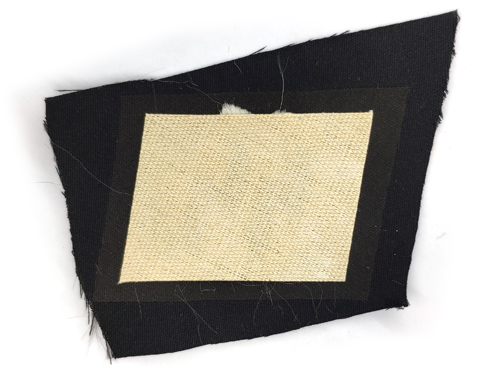
2. Cut out the parallelepipeds from the substrate (this is the name of the figure in the shape of which the SS collar-tab is). Further we will call it “base” for simplicity. Collar-tab size is 37x49 mm. The tabs preserved in the collections are slightly different from each other in size. I will be happy to accept and publish photos from your collections — with sizes.
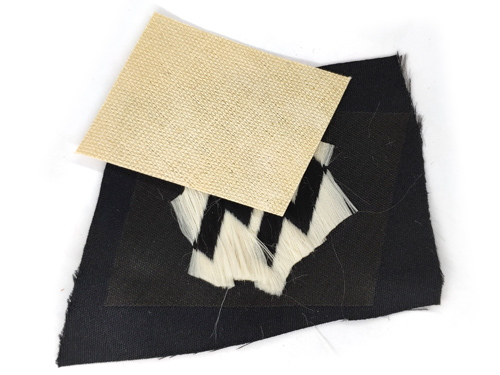
3. Prepare the woven billet. Unfortunately, on the back of the billet there are a lot of threads that add unnecessary thickness and interfere with assembly. They need to be cut at a distance of 3-5 mm from the image.
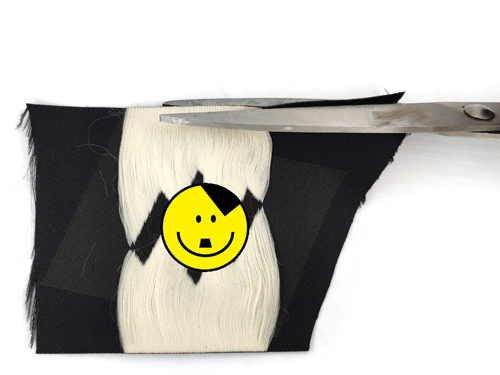
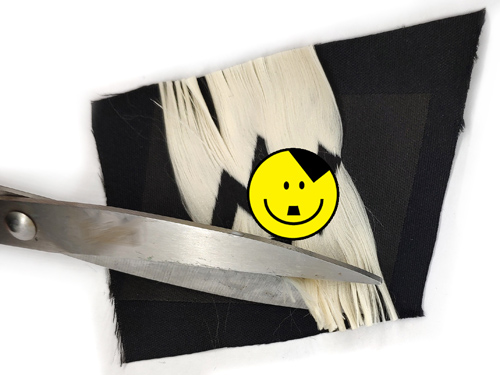
4. Glue the base, apply it the billet. At this stage, it is very important to attach the billet exactly so that the runes are in the middle and do not "cling" to one of the edges. We also trim the excess from the edges by about 5 mm from the billet's field.
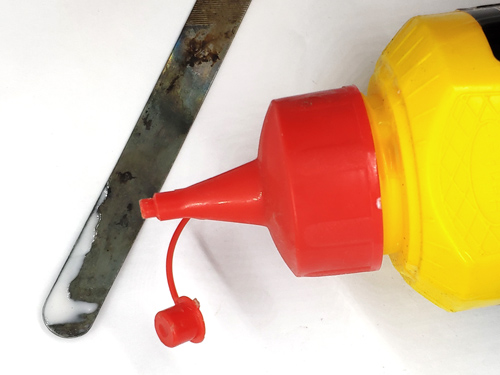
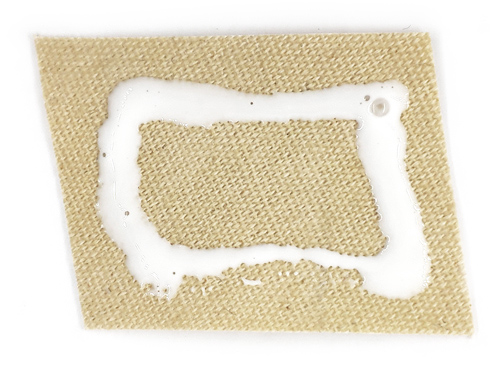
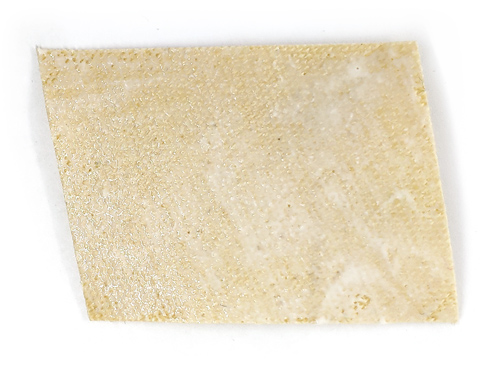
5. Apply glue to the base and tuck short edges first. At this step, it is important to verify once again that the runes were in the middle of the base. Until the glue has dried, you can still move them. To prevent the edges from sliding, the glue needs to be slightly dried, so that the excess solvent evaporates. Then the edges will stick immediately when you press them, and the tab will not fall apart in your hands. You also need to give a slight stretch so that the image on the front part does not grow bristled.
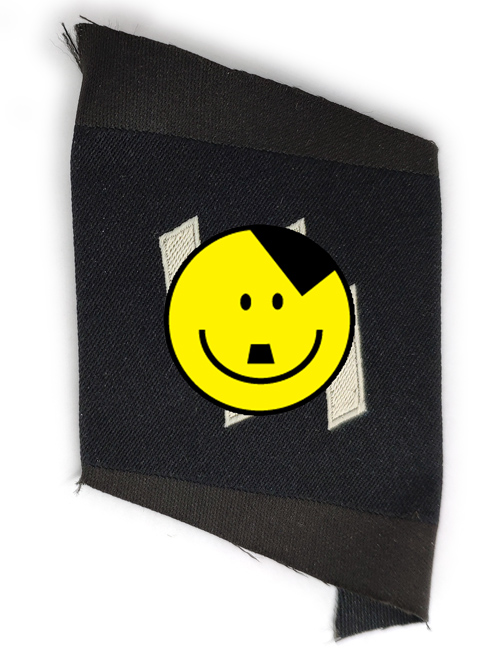
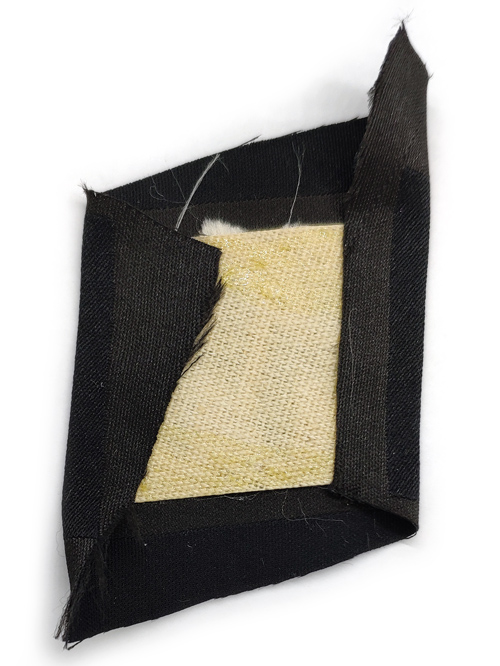
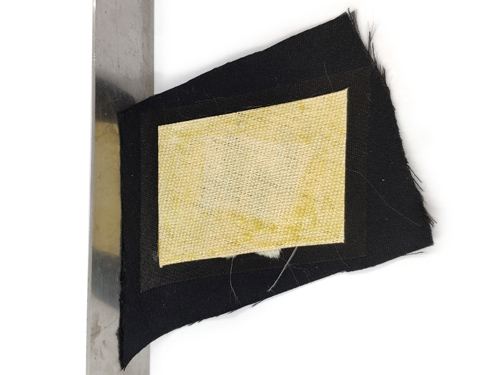
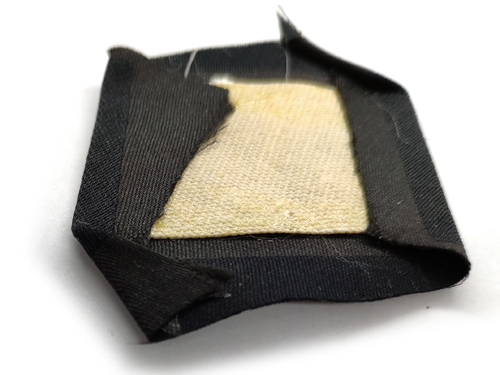
6. Apply more glue and tuck the long edges. And at first the corner is tucked up, and then on it — the whole long edge. When cornering, the skill and understanding of what needs to be done are required. Unfortunately, this knowledge is difficult to convey in words.
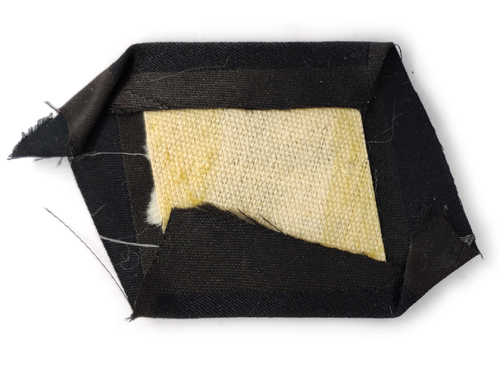
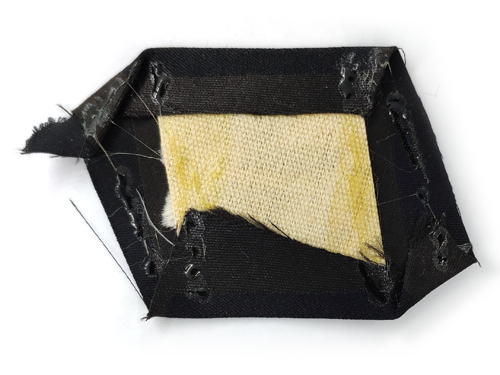
7. Next, put the tab under the press for several hours (preferably until the morning). After that, it can be sewn. Original collar-tabs, as a rule, were made in one factory, and sewn on another. That is, the tabs were a finished product that was marked with a standard label for the component parts of the SS uniform — with the inscription SS/RZM, the product code and manufacturer. Such a label can also be glued, usually it was not on each, but only on a tab with runes (only one of a set of two).
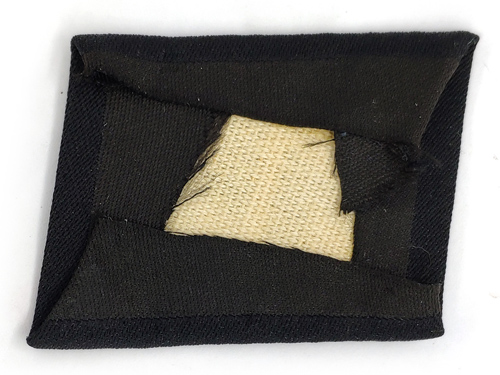
Similarly, you can collect other types of collar-tabs and patches (from cloth, for the Heer, Luftwaffe, etc.).
If you are ready to help us in the production of goods (to assemble collar-tabs from billets, for example) or want to sell your goods and make money — just write to us, contact in any way. We will be happy to cooperate; we are looking for talented private craftsmen.
Author: Anton Volchkov
© Online shop "Replika".
Copying is allowed only with reference to the source.
Tags BeVo, BEVO-Wuppertal, SS collar-tabs, Heer collar tabs, woven stripes, SS, Wehrmacht









